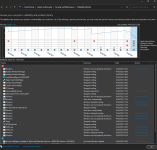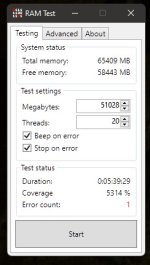Dust specs in one of the contacts perhaps!
At least it's all working proper now though
At least it's all working proper now though

Please remember that any mention of competitors, hinting at competitors or offering to provide details of competitors will result in an account suspension. The full rules can be found under the 'Terms and Rules' link in the bottom right corner of your screen. Just don't mention competitors in any way, shape or form and you'll be OK.



- Checksum: 5C1C
- CPU VRM parameter calibration for improved performance
- Fix system reset Thunderbolt issue







